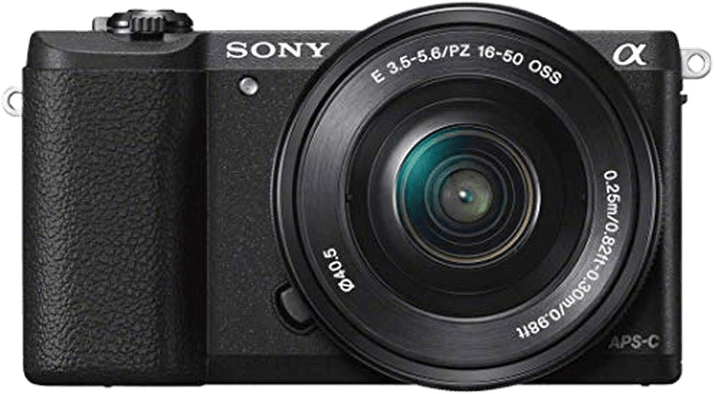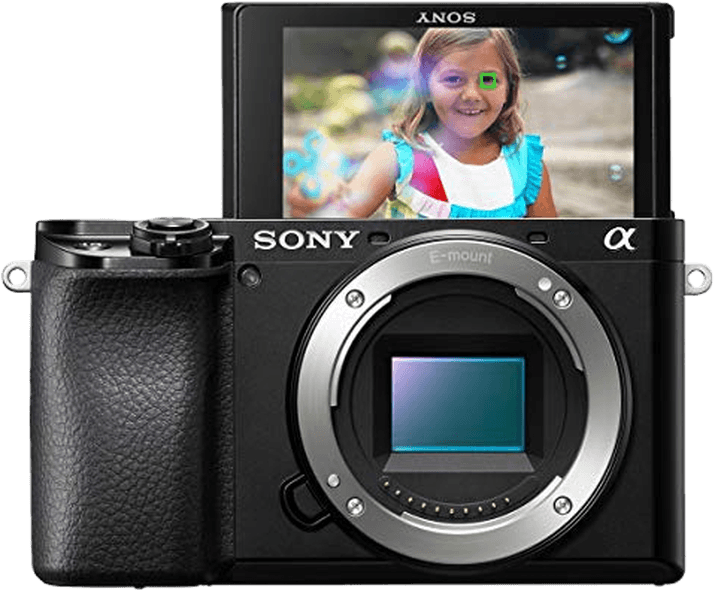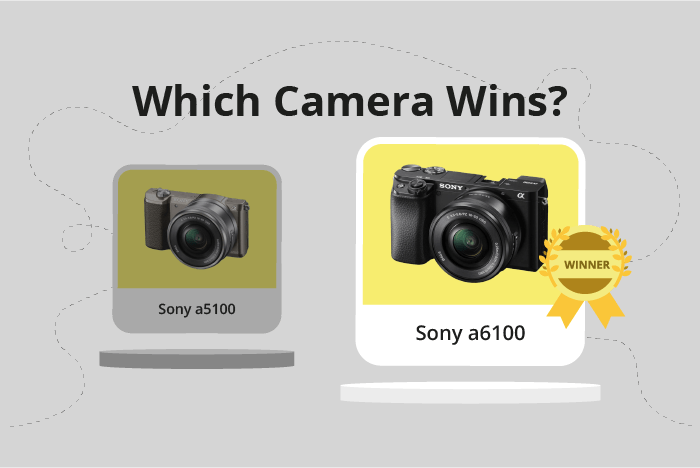Sony a5100 vs a6100 Comparison
Sony a5100

Sony a6100

The Sony a6100 wins the comparison with a score of 66/100, while the Sony a5100 follows closely with a score of 60/100. Both cameras are mirrorless and share similar specifications. However, the a6100 was released in 2019, making it a more recent model compared to the a5100’s 2014 release.
The Sony a6100’s higher score can be attributed to its better overall performance and upgraded features. It is slightly larger and heavier, measuring 120 x 67 x 59mm and weighing 396g, compared to the a5100’s 110 x 63 x 36mm size and 283g weight. This added size and weight might provide a more stable and comfortable grip for some users.
On the other hand, the Sony a5100 has a lower launch price of $550, making it more affordable than the a6100’s $750 price tag. This could be an advantage for those on a tighter budget or looking for a more entry-level option.
Taking all factors into consideration, the Sony a6100 stands out as the better camera due to its improved performance and features, while the a5100 remains a viable option for those seeking a more budget-friendly choice.
Sony a5100 vs a6100 Overview and Optics
The Sony a6100 wins in the optics comparison with a score of 68/100, while the Sony a5100 scores 66/100. Both cameras share several specifications, including a CMOS sensor, Bionz X processor, APS-C sensor size, Sony E lens mount, and no image stabilization. However, there are key differences that set the a6100 apart as the better camera.
The a6100 has a higher shooting speed of 11 frames per second (fps) compared to the a5100’s 6 fps. This faster shooting speed allows the a6100 to capture more images in a shorter amount of time, making it ideal for action photography and ensuring that users don’t miss crucial moments. Additionally, the a6100 has a higher DXOMARK score for its sensor at 82, while the a5100 scores 80. The higher score indicates better overall image quality and performance in areas such as dynamic range, color depth, and low-light capabilities.
On the other hand, the a5100 has a slight advantage in megapixel count, boasting 24.3 megapixels compared to the a6100’s 24 megapixels. This minor difference in resolution may slightly improve image detail in the a5100, but it is not a significant advantage in most shooting situations.
The Sony a6100 is the superior camera in terms of optics, with faster shooting speed and a higher DXOMARK sensor score, making it the better choice for capturing high-quality images in various conditions. The a5100’s marginally higher megapixel count does not outweigh the advantages offered by the a6100, solidifying the a6100 as the winner in this comparison.
Sony a5100 vs a6100 Video Performance
The Sony a6100 outperforms the Sony a5100 in video capabilities, with a significant difference in scores: 91/100 for the a6100 and 56/100 for the a5100. Both cameras share some common specifications, such as full HD video resolution and 1920 x 1080 video dimensions. However, the a6100 surpasses the a5100 in various aspects, making it the superior choice for video recording.
The Sony a6100 boasts a 4K video resolution and 3840 x 2160 video dimensions, providing higher image quality and detail than the a5100’s full HD resolution. Additionally, the a6100 offers an impressive maximum video frame rate of 120fps, allowing for smooth slow-motion footage. This is double the a5100’s 60fps frame rate, which limits its slow-motion capabilities. Furthermore, the a6100 has built-in time-lapse functionality, making it more versatile and convenient for capturing time-lapse videos without requiring additional accessories or software.
On the other hand, the Sony a5100 does not have any significant advantages over the a6100 in terms of video capabilities. Its lower score reflects its limitations in resolution, frame rate, and time-lapse functionality.
Considering the differences in video performance, the Sony a6100 is the clear winner and a better choice for those who prioritize video quality and versatility. The a5100 falls short in comparison, offering fewer features and lower video capabilities. Therefore, for videographers or those who require advanced video features, the Sony a6100 is the recommended choice.
Sony a5100 vs a6100 Features and Benefits
The Sony a6100 outperforms the Sony a5100 in terms of features with a score of 68/100 compared to the a5100’s 54/100. Both cameras share similarities in certain specifications, including a 3-inch screen size, 921,600-dot screen resolution, touchscreen capabilities, flip screen, GPS absence, and WIFI connectivity. However, there are distinct differences that set these cameras apart, making one a stronger choice over the other.
The Sony a6100 excels in its feature set due to its added Bluetooth connectivity, something the a5100 lacks. This addition provides photographers with more options for connecting and transferring files, enhancing the overall convenience and user experience. The a6100’s higher feature score is a result of this advantage.
On the other hand, the Sony a5100, despite its lower feature score, still offers a solid set of capabilities suitable for various photography needs. If Bluetooth connectivity is not a priority for a user, the a5100 remains a viable option. Both cameras possess essential features such as touchscreen functionality, flip screens, and WIFI, making them suitable for a range of photography styles.
Taking into account the differences in feature scores and specifications, the Sony a6100 emerges as the stronger choice due to its added Bluetooth connectivity. However, the Sony a5100 remains a competitive option for those who do not require this extra feature. Both cameras cater to different user needs and preferences, ultimately allowing photographers to choose the best fit for their specific requirements.
Sony a5100 vs a6100 Storage and Battery
The Sony a6100 emerges as the winner in the storage and battery category with a score of 37/100, while the Sony a5100 scores 24/100. Both cameras have one memory card slot and accept SD/SDHC/SDXC and Memory Stick Pro Duo cards. They also use the same battery type, NP-FW50.
The a6100 excels with a longer battery life of 420 shots, compared to the a5100’s 400 shots. Additionally, the a6100 offers USB charging, making it more convenient for on-the-go users. This added flexibility contributes to its higher score in this category.
The a5100, however, does accept Memory Stick Pro-HG Duo cards, which the a6100 does not. This may be an advantage for some users who prefer this storage format. Despite this slight edge, the a5100’s lower score reflects its shorter battery life and lack of USB charging.
Ultimately, the Sony a6100 proves to be the better choice for those prioritizing longer battery life and convenient charging options. Its advantages in storage and battery life make it a more reliable option for photographers and videographers.
Sony a5100 vs a6100 – Our Verdict
Are you still undecided about which camera is right for you? Have a look at these popular comparisons that feature the Sony a5100 or the Sony a6100:

